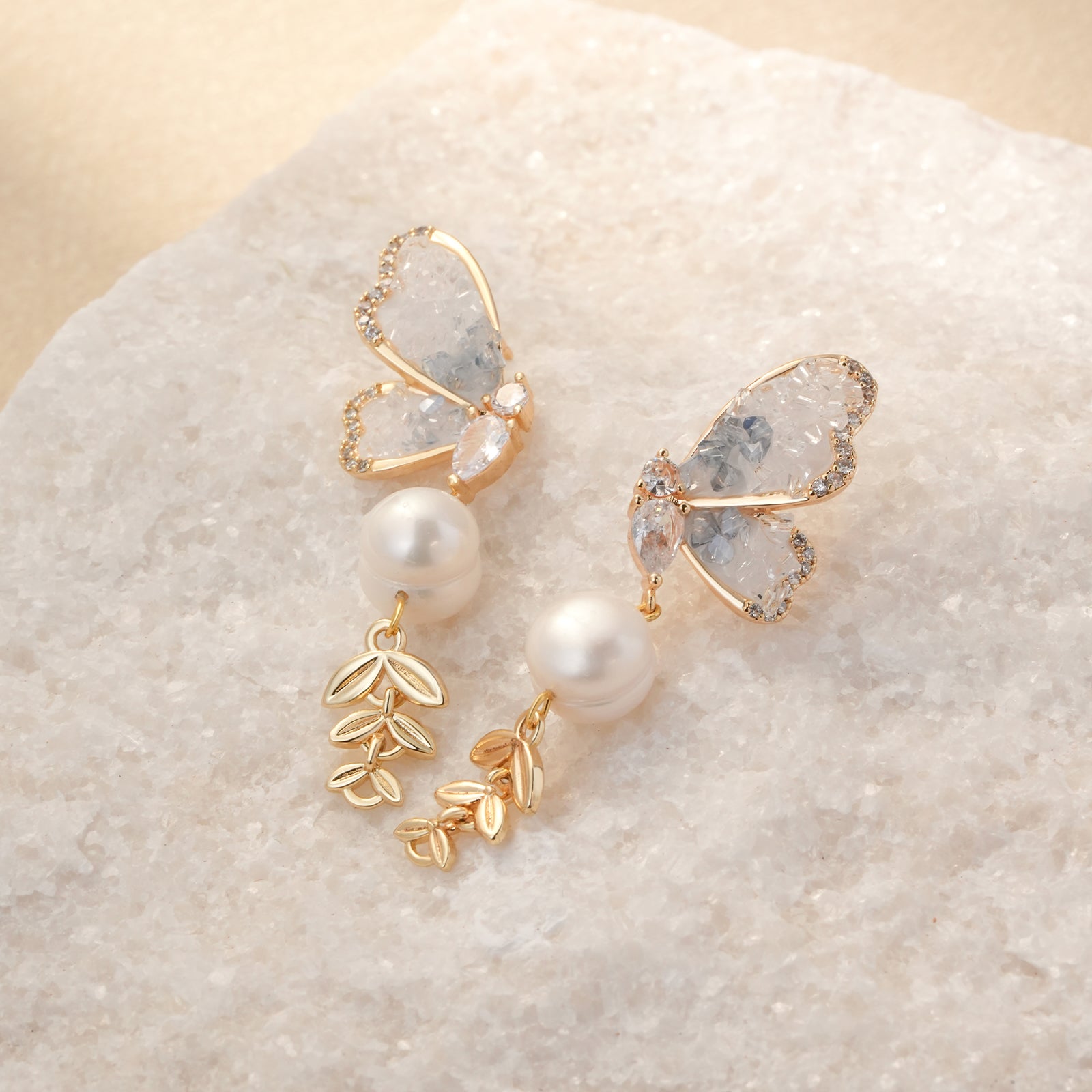
The Fascinating History of Pearls: How They Were Discovered and Their Journey Through Time
Throughout history, pearls have been cherished as one of the most beautiful and timeless treasures of the natural world. Their delicate luster and ethereal glow have made them symbols of wealth, beauty, and status. But how did humans first discover pearls? What is the story behind their rise as one of the most sought-after gemstones? This journey begins in the distant past and spans across cultures and civilizations, revealing the deep connection between humanity and these remarkable gems of the sea.
The Origins of Pearl Discovery
The history of pearls goes back thousands of years, and while we can't pinpoint exactly when humans first discovered them, the origins of pearl hunting can be traced to ancient times. The earliest known discovery of pearls dates back to around 2300 BC in the Persian Gulf. In fact, pearls were discovered long before they were understood to be natural gemstones. Ancient cultures simply stumbled upon these beautiful gems, with no knowledge of how they were formed or how to harvest them.
Pearl oysters are naturally found in the warm waters of the Persian Gulf, the Indian Ocean, and the South Pacific. These regions provided some of the earliest sources of pearls. While pearls can also be found in freshwater environments, saltwater pearls were the first to be discovered and valued by ancient cultures.
The Ancient World’s Fascination with Pearls
Pearls were known to early civilizations, including the Egyptians, Mesopotamians, and Persians. The ancient Egyptians, in particular, are often credited with recognizing the rarity and beauty of pearls. Egyptian tombs dating back to 3500 BC have revealed evidence that pearls were being worn by pharaohs and nobility. In fact, the Egyptians were one of the first civilizations to use pearls as part of elaborate jewelry, adorning themselves with necklaces, earrings, and crowns crafted from these precious gems.
In Mesopotamia, pearls were also highly prized. The ancient Sumerians, known for their advanced culture and trade networks, valued pearls and exchanged them for goods and services. Historical records suggest that pearls were even used as a form of currency in some early civilizations. The Persians, too, were known to possess exquisite pearls, and the trade of these gems across ancient trade routes helped cement their status as luxury items.
The Romans, however, are perhaps the most famous of ancient civilizations to elevate the status of pearls to a symbol of wealth and power. Julius Caesar, in particular, is often cited for his role in promoting the beauty of pearls in Roman society. His famous conquest of the Persian Empire brought with it an influx of Persian pearls, which were used by Roman aristocrats to demonstrate their status. Cleopatra, known for her legendary beauty, was also said to have been fond of pearls, and one of her most famous anecdotes involves dissolving a pearl in vinegar to drink as a show of wealth and extravagance.
Pearls in Asia: The Evolution of Cultivation
While pearls were prized in the West, it is in Asia where the cultivation of pearls took a giant leap forward. The history of pearls in Asia is deeply intertwined with the development of pearl farming. The Chinese are often credited with being the first to cultivate freshwater pearls, a practice that dates back to the Tang Dynasty (618–907 AD). Initially, Chinese pearl cultivation was centered around small freshwater pearls, and they were highly sought after for use in jewelry and art.
In Japan, the discovery and refinement of pearl cultivation reached new heights in the early 20th century. Kokichi Mikimoto, a Japanese entrepreneur, is widely recognized as the pioneer of modern pearl farming. Mikimoto’s groundbreaking technique of cultivating cultured pearls revolutionized the pearl industry, allowing for the mass production of pearls and making them more accessible to the public. His invention made pearls no longer a rarity reserved for the elite, but a luxury that could be enjoyed by people of different social strata.
Before Mikimoto’s advancements, natural pearls were rare and could only be obtained through arduous and dangerous pearl diving. Divers would dive into the deep waters to collect oysters, hoping to find pearls hidden within. This labor-intensive process limited the availability of pearls and kept their prices high. The introduction of cultured pearls, however, changed the global pearl market forever.
The Evolution of Pearls in Western History
In Western cultures, the fascination with pearls continued to grow throughout the centuries. During the Renaissance period, pearls were highly coveted by European royalty and aristocrats. They were often used to embellish crowns, tiaras, and gowns. The 16th and 17th centuries marked a golden age for pearls in Europe, especially in Spain, Italy, and France, where the upper classes were eager to demonstrate their wealth and sophistication.
The Baroque period saw a particularly creative use of pearls in jewelry. Baroque pearls, which are irregularly shaped pearls, were popular in this era and were often incorporated into intricate, ornate designs. These pearls, while not perfectly round, were prized for their unique shapes and organic beauty.
Pearls continued to be symbols of status in European society until the 19th century, when the development of new mining techniques and the discovery of pearls in other parts of the world made them more widely available. However, the allure of pearls never faded. By the early 20th century, pearls had become a timeless staple of fashion, popularized by iconic figures like Coco Chanel and Audrey Hepburn. Chanel’s designs, particularly, made pearls a symbol of elegance and luxury for women worldwide.
Pearls in the Modern Era: The Global Market
In the 20th and 21st centuries, pearls have remained a staple of high fashion and luxury. With the invention of cultured pearls, the global supply of pearls expanded, allowing for more people to access these gems. Today, pearls are cultivated in several parts of the world, including Japan, China, French Polynesia, and Australia. These countries are home to some of the largest and most productive pearl farms in the world, supplying pearls to meet the growing global demand.
The modern pearl market is diverse, with a wide range of colors, sizes, and shapes available. South Sea pearls, known for their large size and rich luster, are considered some of the most valuable. Tahitian pearls, which come in shades of black, green, and purple, are also highly coveted for their unique appearance. Freshwater pearls, known for their wide range of shapes and colors, are often more affordable and are popular for custom-made jewelry.
Beyond their aesthetic beauty, pearls have gained recognition for their symbolic meaning in various cultures. In the Western world, pearls continue to be associated with purity, wisdom, and wealth. They are often chosen as gifts for significant life events, such as weddings, birthdays, and anniversaries. In many cultures, pearls are also considered symbols of love, representing the beauty that can arise from hardship.
Conclusion: The Timeless Beauty of Pearls
The history of pearls is a story of discovery, exploration, and innovation. From their accidental discovery in ancient seas to the development of modern pearl farming, pearls have captured the imaginations of people around the world for millennia. Today, they remain one of the most cherished and sought-after gems, revered for their beauty, rarity, and timeless elegance.
As we continue to appreciate the history and significance of pearls, it’s clear that they will remain an integral part of the jewelry world for generations to come. Whether in the form of a necklace, earrings, or a bracelet, pearls will always be more than just beautiful gems—they are a symbol of the enduring connection between humanity and the natural world.



Deixar comentário
Este site é protegido por hCaptcha e a Política de privacidade e os Termos de serviço do hCaptcha se aplicam.